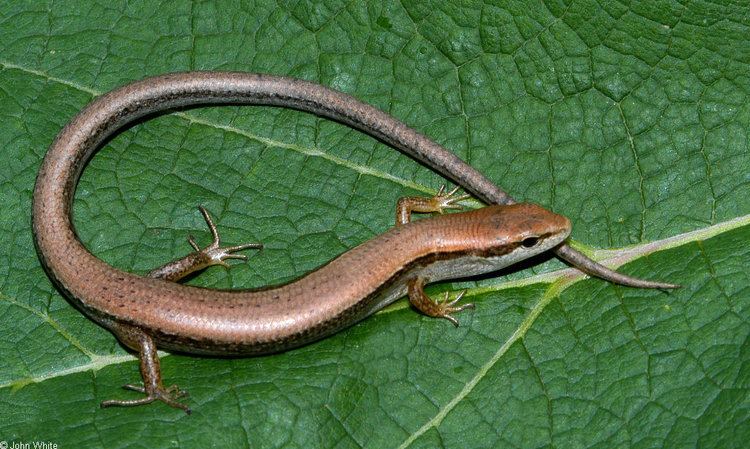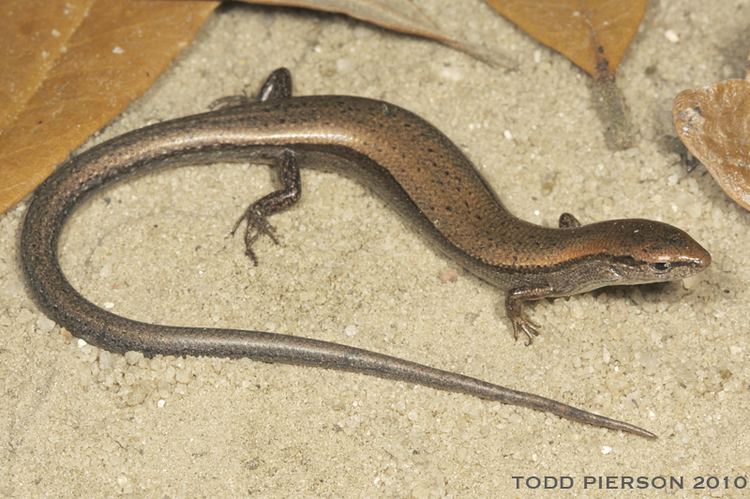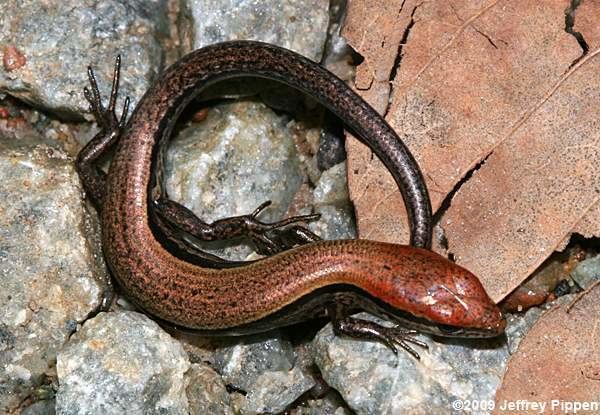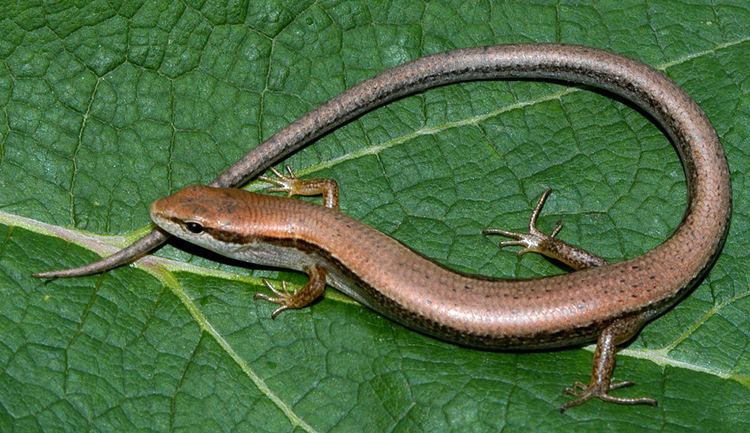Subphylum Vertebrata Suborder Sauria | Infraorder Scincomorpha Higher classification Scincella | |
 | ||
Similar Scincella, skink, Reptile, Plestiodon fasciatus, Plestiodon inexpectatus | ||
Scincella lateralis is a small species of skink found throughout much of the eastern half of the United States, and into northern Mexico.
Contents

Common names

Common names for this species include the little brown skink and the ground skink. However, the common name, ground skink, may refer to any species in the genus Scincella.
Description

The little brown skink is one of the smallest reptiles in North America, with a total length (including tail) of only 3 - 5.5 inches (7.5 - 14.5 cm). Its back is typically a coppery brown color with a white or yellow underside, and like most skinks has an elongated body and short legs. Transparent disks in the lower eyelids allow it to see with its eyes closed (Beane 2006, Palmer et al. 1995).
Geographic range

The ground skink is found throughout much of the Eastern United States, from New Jersey, Ohio [1], and Kansas south to Texas and Florida, as well as into northern Mexico. It is absent from higher elevations in the Appalachian Mountains.
Habitat

S. lateralis lives in a variety of habitats, including deciduous or mixed deciduous/coniferous forests, hedgerows, and the edges of streams and ponds. It does require a deep substrate, such as leaf litter.
Behavior

The ground skink is a fossorial species, spending the majority of its time buried in leaf litter on the forest floor. Unlike other skinks, it seldom climbs trees. Its usual means of locomotion is to wriggle through the leaf litter with undulating movements. It may dive under water when pursued, although normally avoids wet areas. It is largely diurnal, but may be active at night as well. It hibernates during the coldest months, but may be active in almost any month of the year in North Carolina (Palmer et al. 1995). As befits a tiny lizard, the home range of an individual may be as small as 20 square meters (Natureserve).
Diet
The diet of the little brown skink consists of small insects, spiders, and other arthropoda, such as isopods.
As prey
Ground skinks are, in turn, preyed upon by snakes such as the eastern racer, ringneck snake, and scarlet kingsnake. Predatory birds of woodland habitats, such as the barred owl and the red-shouldered hawk, also feed upon ground skinks. Even the eastern bluebird has been observed feeding on this tiny lizard (Palmer et al.2008, Robert Brooks 2009).
Sexually mature S. lateralis females lay small clutches of 1-6 (usually 2-3) eggs in moist soil, rotting logs, falling logs, or under rocks. Eggs are laid during the summer, March through August in the Southern United States. There may be more than one clutch per year. In contrast to Eumeces species, the female ground skink does not guard its eggs (Robert Brooks 2009). Eggs hatch in one to two months, and young are sexually mature at one year of age.
Conservation status
The little brown skink is a widespread and common species in most of its range. It is of conservation concern only on the northern edge of its range and can be seen in grassland or forest.
